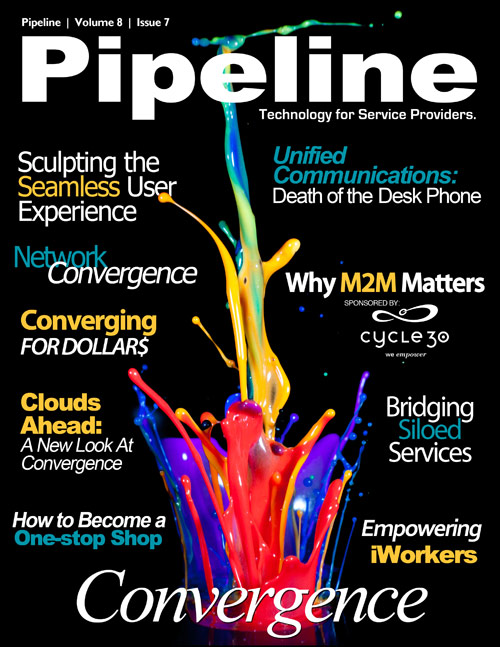By: Becky Bracken

Convergence is a tired old term that sounds deceptively simple. In fact, bringing together silo-ed services, like voice, data and IP across different networks so that the customer seamlessly moves within a multi-play environment, requires both deep technical acumen and a deft touch from organizational leadership.
Quad-play, while it first grabbed hold in Europe, is catching fire in the U.S. By 2016, 13 percent of U.S. households will have a quad-play service, and 57 percent of households currently take multiple services from the same provider, according to a report from Strategy Analytics from July 2011. Even more encouraging is that the AT&T U-verse ARPU has increased 8 percent year-over-year to $170, according to a report from Strategic Analytics.
From a pure technology standpoint, there's a dizzying array of data and analytics that must be processed and move between networks in real time in order to give customers the expected level of service. But, what's also required of operators is a real gut-check about what services they are good at delivering and how their organization will adapt to managing varying services, networks, devices and applications.
The Customization Quandary
Even those touted as off-the-shelf OSS/BSS systems require a significant amount of customization to fit into a CSP's environment. Certainly the level of customization an operator looks for in these systems has to be balanced between efficiency savings and implementation costs.
"Some Tier 1 carriers can justify the cost of a fully custom system from Amdocs," Dan Baker, an industry analyst with the Technology Research Institute said. "But most operators are strapped for cash."

Baker said that smaller operators who are acquiring additional network assets are more likely to be willing to adjust their internal processes to work with an off-the-shelf solution.
But this too presents a problem. There is a cost in shifting entire processes of an organization. So CSPs really need to look at the ability of their operations to be flexible and adapt to new systems, services, networks, applications, and devices. This goes well beyond billing procedures.
As Mark Sylor, Consulting Engineer for New Technology, EXFO Service Assurance points out these systems also impact how an operator's brand is presented to the customer through a customer portal or interface. Even how that information is presented to the customer will be affected. Integrated OSS/BSS systems, by virtue of their ubiquity, will touch every aspect of a customer's experience, so getting it right couldn't be more important.
Finally, each operator has different organizational configurations that require varying access points to the network and the data. Less customizable solutions might not offer the flexibility and availability a particular operator's organization requires.
"There's no doubt that the hardest problem [for quad-play service providers] is organizational," Sylor said. "Service providers have grown up with different organizational teams, one for each service they offer. It is hard to get them to work together and hard to reorganize them. Unifying around a single tool for a function like service assurance can help. But for that to succeed you also have to recognize that these organizations have developed expertise and knowledge that must be maintained."









